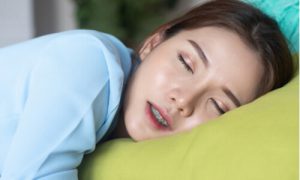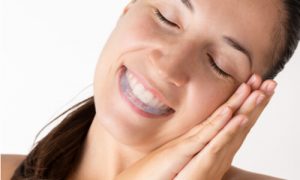Teeth grinding, commonly known as bruxism, is a medical disorder that can affect both adults and children. While this condition frequently manifests during the night, identifying as nocturnal or sleep bruxism, some people also suffer from daytime teeth grinding.
Like sleep bruxism, daytime teeth grinding can cause serious health problems. Besides wearing down your tooth enamel, it can cause sensitivity and lead to complex conditions, including temporomandibular disorder.
If you find yourself grinding your teeth or clenching your jaw while you are awake, you might be suffering from diurnal bruxism. Read further to learn more about your condition, what you can do with it, as well as its potential effects on your sleeping habits.
Daytime Bruxism
Diurnal bruxism, also known as awake bruxism, is a condition where an individual grinds, clenches, and gnashes their teeth during the daytime. This disorder happens either consciously or unconsciously. When a person grinds their teeth far more frequently, it can potentially bring harmful effects to your overall health.
Sleep Bruxism vs. Awake Bruxism
According to studies, bruxism affects at least twenty percent of the population. However, this condition is most common in adults between the ages of twenty-five to forty-four years. Bruxism comes in two forms, namely awake bruxism and sleep bruxism. While both conditions share similar symptoms, sleep bruxism is more widely prevalent.

Teeth grinding during nighttime is a severe concern that poses a threat to a person’s sleep quality. As a precursor of other disorders, sleep bruxism can lead to snoring and pauses in breathing while asleep. Since the person is unconscious throughout the manifestation of their condition, it is crucial to prevent possible complications.
You may use dental mouth guards before going to sleep to preserve your teeth. A special mouthpiece can also be used for snoring issue. In severe cases, psychological and medical approaches can help to minimize the occurrence of the condition.
Temporomandibular Disorder
Mild episodes of daytime teeth grinding do not lead to complications. However, it can develop into a more severe condition that can lead to other disorders and medical conditions, especially if left untreated.
Temporomandibular disorder, also known as TMD, is the most common side effect of bruxism. It affects the joints along your jaw, characterized by clicking noises when you open and close your mouth.
Causes of Daytime Bruxism
Doctors do not have a complete understanding of the reason behind awake bruxism. It can be due to a combination of physical, psychological, genetic, and psychosocial factors, mainly including the following:
- Stress. Stress is perhaps one of the most frequent reasons for a person to develop daytime bruxism. Several studies show that the condition often links to individuals who suffer high emotional tension. While teeth grinding and jaw clenching are normal body responses, people who are more susceptible to mental distress may create a habit out of it.
- Misaligned bite. Individuals who have an unbalanced or misaligned bite can develop a mannerism of grinding and clenching throughout the day. The same also applies to those who have missing, crooked, and broken teeth.
- Excessive caffeine intake. Caffeine is present in several drinks such as coffee, sodas, alcohol, and hot chocolate. Consuming a significant amount of caffeine can affect your body’s response, increasing the risk of grinding during the day.
- Other disorders. Daytime bruxism can develop as a coping mechanism for existing mental health or medical illnesses. These include dementia, Parkinson’s disease, epilepsy, and many more.
What to Do About Daytime Bruxism
Excessive bruxism can wear down your teeth over time, resulting in several dental concerns. Chronic jaw clenching and teeth grinding can result to lose, fracture, or even missing teeth. While dental treatment options can help fix these issues, it would still be best to prevent this situation. Taking essential measures to control your condition helps avoid the damaging effects of daytime grinding.
Below are some techniques that can help you manage bruxism.
Lowering your stress levels
Since daytime grinding’s primary cause is stress, keeping yourself emotionally stable is one of the best ways to prevent this problem. Experts recommend stress-reducing activities and methods to help you cope with your mental health:
- Meditation
- Acupuncture
- Deep breathing
- Yoga
- Exercise
- Talking to a psychologist
Orthodontic treatment
If your bruxism develops because of your current dental condition, perhaps considering an orthodontic treatment can help. Fixing your teeth can contribute to reducing the habit of teeth grinding and jaw clenching. Talk to your dental provider and get to know the necessary treatment plans to ease your concerns.
Protecting your teeth

Whether you face the challenges of daytime bruxism or unconsciously grinding your teeth at night, one of the best treatments for bruxism is to wear a fitted mouthguard. Aside from reducing the effects of teeth grinding on your tissues and muscles, a mouthguard can protect you from any related disorders, such as snoring and sleep apnea. A high-quality mouthguard can also promote signals to your nerves that teeth grinding is not necessary. This accessory can create an alert to your habits and ultimately stop bruxism.
Medical approach
In severe cases, your doctor or dentist may prescribe muscle relaxants that will minimize the impact of your teeth grinding. It is usually the last resort when all other treatment options are not working. This approach is also necessary for those experiencing severe pain and having difficulty opening their mouth.
Botulinum toxin, also known as Botox, is one of the most common muscle relaxants that medical professionals use. Your doctor will inject it into the area that controls muscle activity. However, the treatment works only as a temporary relaxant that could last for up to six months.
Psychological approach
Biofeedback treatment involves the process of helping the person be aware and stay in control of their behavior. This approach helps reduce and eliminate both awake and sleep bruxism.
During the treatment, a therapist specializing in biofeedback teaches you techniques in controlling your jaw and muscle movements. This training includes auditory, visual, and vibratory feedback through monitoring your body’s electrical activity. However, this approach is still undergoing studies, and more intensive research is required to understand its long-term advantages fully.
